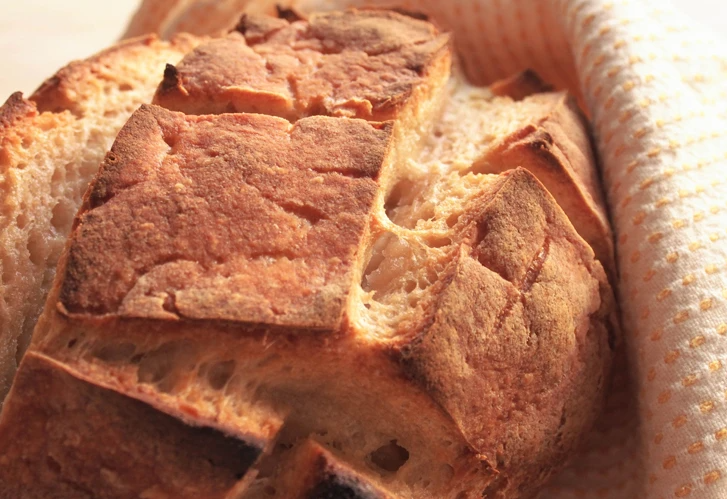
With Thanksgiving around the corner, you may already be brainstorming ways to accommodate every guest’s dietary needs. We’re here to help with two super simple, but still tasty, gluten-free Thanksgiving bread recipes. With the perfect blend of both sour and sweet, you can serve either bread with dinner, make leftover sandwiches the next day, or toast any leftover slices for an easy post-holiday breakfast. To make both loaves we used our Fourneau 2.0 mat and tray set, which you can find here, but either dough can also be transferred into the Fourneau oven using a peel. Just remember to flour the peel surface with your gluten free flour of choice and sprinkle it with polenta or gf breadcrumbs before transferring the loaf to reduce the possibility of getting the loaf stuck to the peel.
Please note: while the two recipes call for different ingredients, the forming and baking instructions are the same.
Recipe: Gluten Free Cranberry Bread
500 g Bob’s Gluten Free All Purpose Flour
4 g Active dry yeast
10 g Salt
25 g Xanthan gum
100 g Trader Joe’s Orange Infused Dried Cranberries
456 g Water
Recipe: Gluten Free Kefir Bread
(We used the Bread In 5 Master Recipe flour mixture which you can find here.)
250 g Rice flour
100 g Oat flour
50 g Tapioca flour
50 g Potato flour
10 g Xanthan gum
4 g Active dry yeast
10 g Salt
150 g Water
275 g Plain kefir
| MIX |
Mix all dry ingredients thoroughly (including cranberries).
|
|
| RISE |
Cover bowl tightly with plastic wrap. Allow dough to rise for 12-18 hours, depending on weather and temperature.
|
|
| FORM |
Gently turn dough onto (gluten free) floured work surface.
|
|
| BAKE |
When ready to bake, place baking tray into the Fourneau. If using a peel, flour the peel generously with gluten free flour and polenta and slide dough into the oven.
|
 |

|

|
|
 |
 |
It’s important to note that gluten free dough is very “fragile” and needs to be handled gently in order to preserve some of the trapped gas bubbles that the yeast forms. Because of the delicate nature of the dough, it should not be be kneaded or folded. To avoid a dense and gummy loaf, be sure to handle the dough with care and shape the dough without using too much pressure.
To shape the dough, simply place it on a (gf) floured work surface, wet your hands with water, and smooth into the desired loaf shape. Make sure to “glue” any lines and cracks with the water. The moisture from this process will help the loaf form it’s crust while holding the contents together. Once complete, score the bread just as you would a regular loaf but with slightly deeper cuts. With minimal rise, the score cuts will maintain their depth and remain consistent in the final product. We recommend making the scores about ½ inch deep for best results.

Although these gluten free breads are denser than the loaves you may be used to eating and making, they make delicious toast and are a great alternative for dinner guests who are avoiding gluten. Are you interested in seeing more gluten free recipes? Do you have a favorite flour mix when baking gluten free bread? Please let us know in the comments!
If you are baking for anyone with Celiac Disease, a severe gluten allergy, please be sure to consult with them on their best baking practices for avoiding cross contamination.

